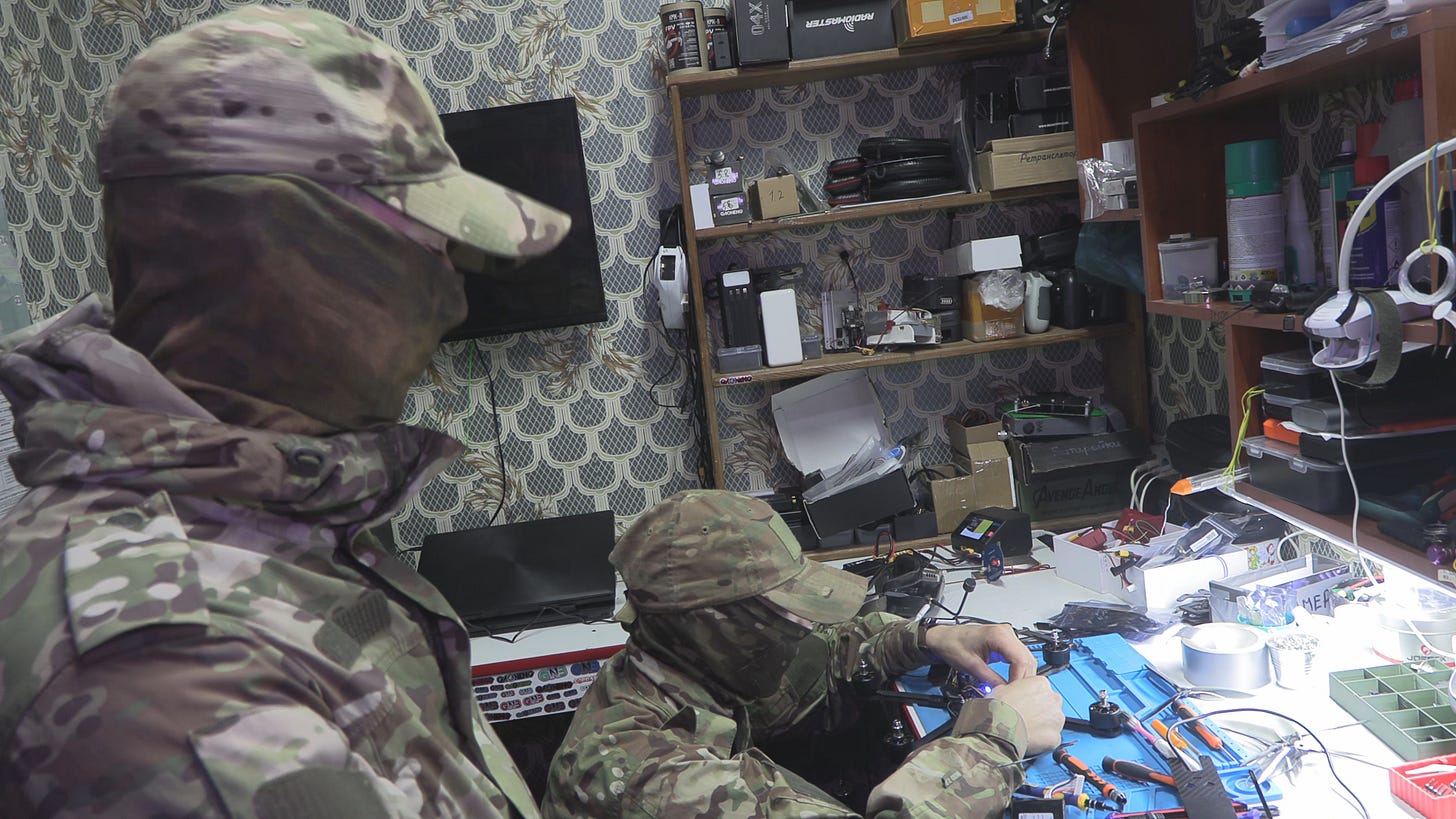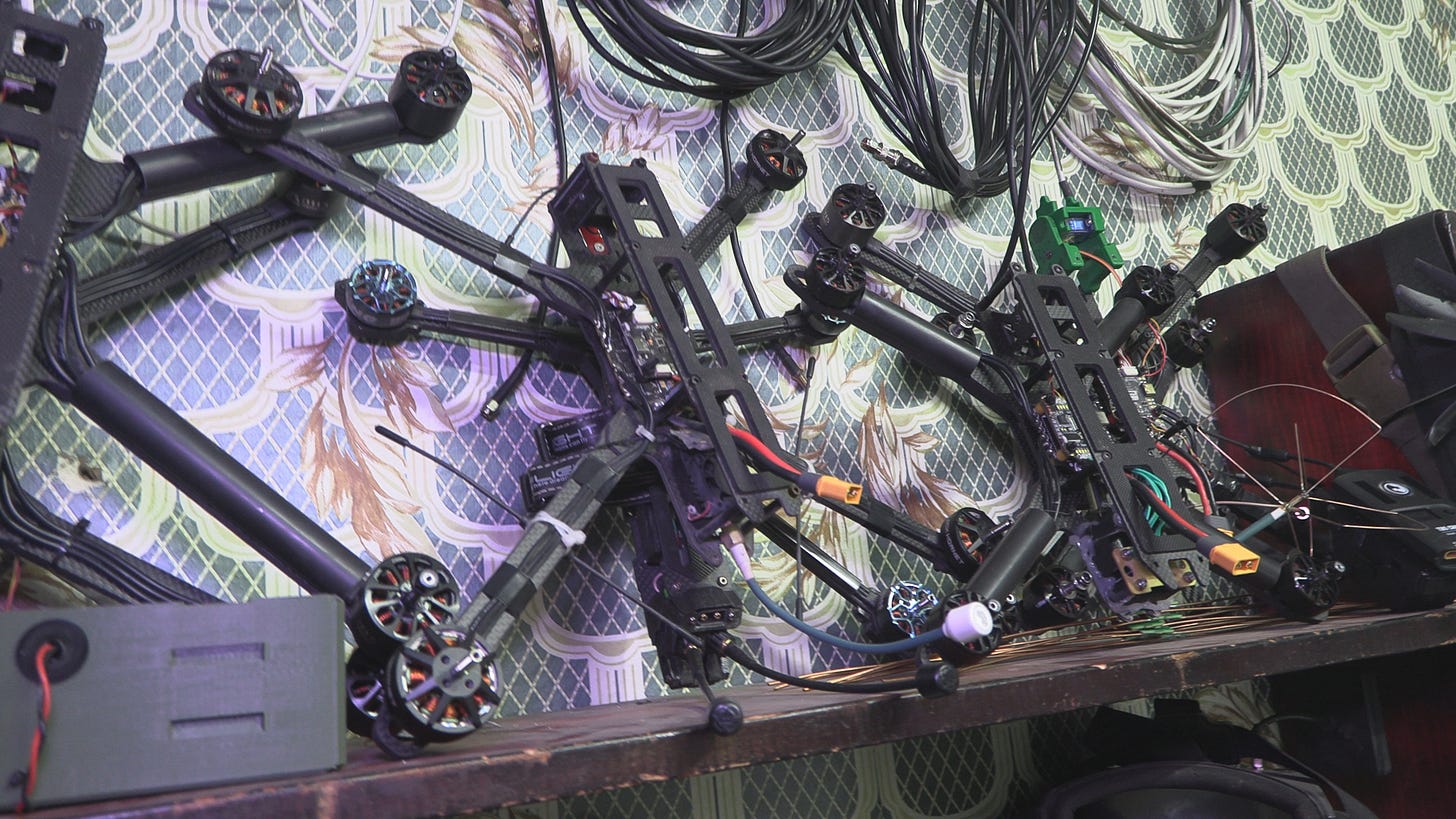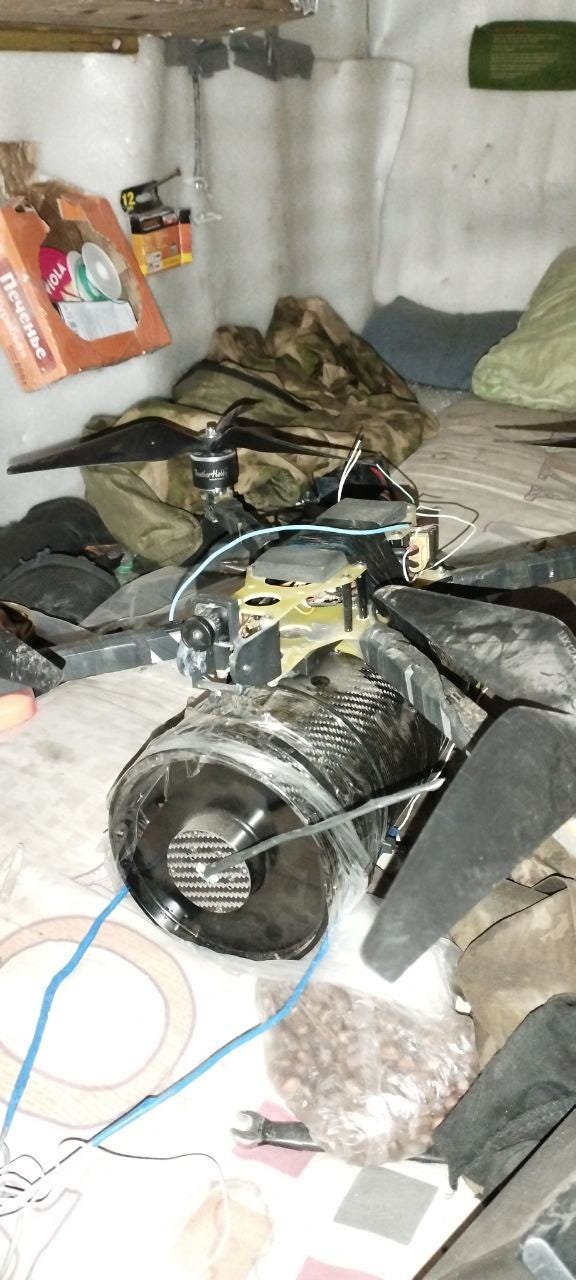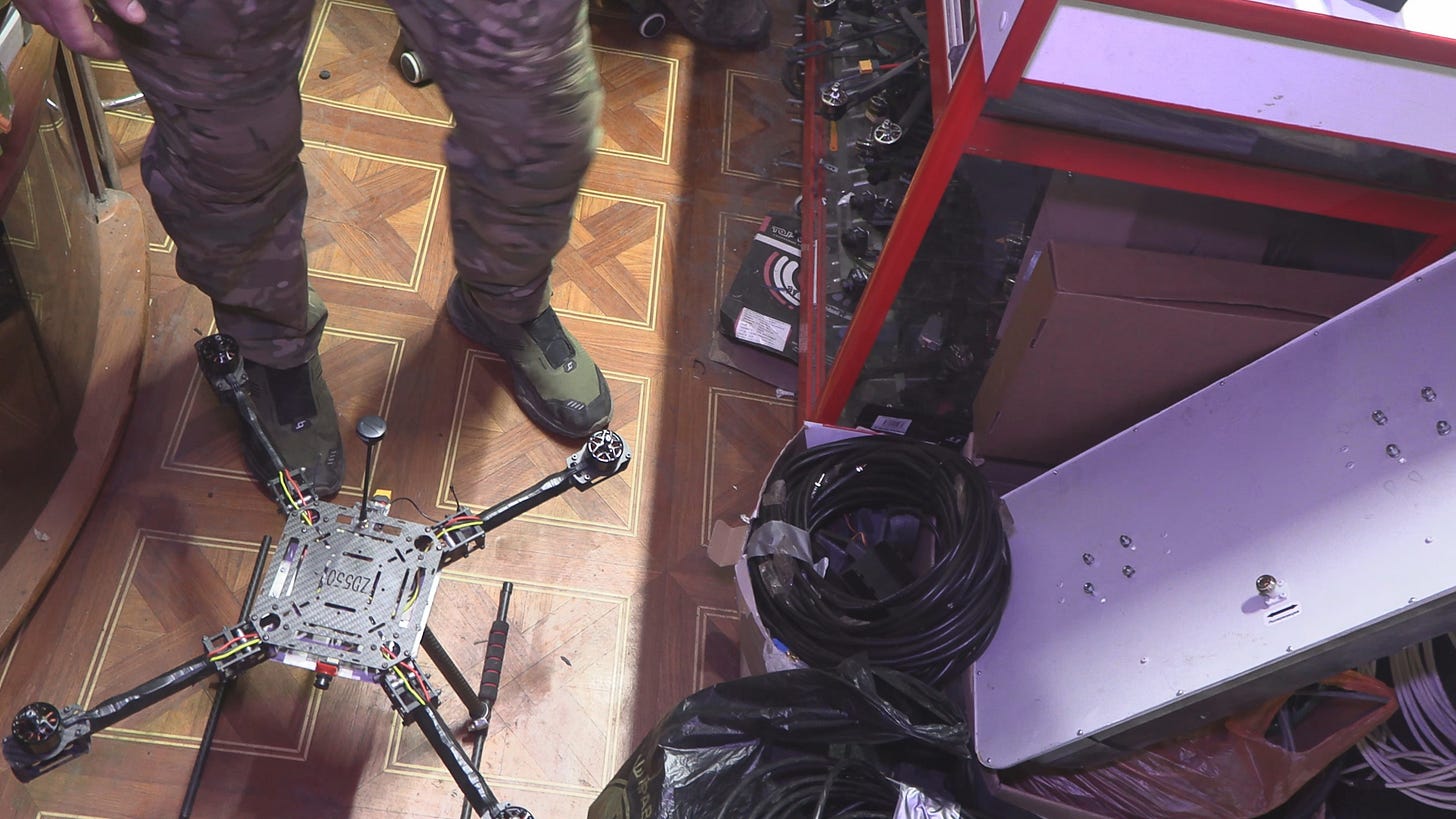I recently traveled to the Belogorovka frontline, one of the last Ukrainian strongholds in that region, to gain an exclusive look inside the Russian Army’s drone warfare laboratory. This facility is where FPV (First-Person View) kamikaze drones are assembled, reengineered, and prepared for frontline use. In this report, I explore Russia’s latest “unjammable” fiber-optic drone technology and its impact on modern warfare.
The Russian Drone Warfare Laboratory
Upon entering the facility, I found myself in what can only be described as a high-tech workshop dedicated to assembling and modifying drones. This lab is part of a larger system, which also includes an explosives laboratory where payloads are prepared.
One of the engineers, who goes by the call sign "Sibir," explained that their team completely reconfigures captured and damaged drones, adapting them for Russian use.
"We take enemy drones, change their frequencies, reprogram their controls, and send them back to the battlefield," he explained. This process allows Russian forces to exploit vulnerabilities in Ukrainian drone operations while reinforcing their own capabilities.
He also explained how they send hundreds of new drones to the front
FPV Drones: The Heart of Modern Drone Warfare
FPV drones have become one of the most effective tools in the war. These drones are manually piloted via a first-person view headset, allowing operators to conduct precision strikes on enemy positions.
During my visit, I was shown both Russian-made FPV drones and Ukrainian models that had been captured and modified. Despite some size and payload differences, the core technology remains largely the same.
One of the technicians noted:
"A standard FPV drone can carry between 1.5 to 2.5 kg of explosives, while larger models can handle up to 8 kg."
Unjammable Fiber-Optic Drones: Russia’s New Secret Weapon
The most significant revelation from my visit was Russia’s development of fiber-optic drones, described as “unjammable.” Unlike standard FPV drones that rely on radio frequencies, these new models operate through a physical fiber-optic cable connected to the controller.
This technology eliminates the risk of electronic warfare (EW) interference, making these drones immune to jamming systems used by Ukraine and NATO allies.
"The drone is connected by a thin wire, almost like a fishing line, that allows it to be controlled without interference," an engineer explained. Electronic warfare cannot disrupt these drones, as there is no radio signal to block.
These drones are currently being deployed in combat, and while I wasn’t able to see one in action during this report, I have been promised footage from the battlefield in the near future
Beyond Combat: Drones for Logistics and Supplies
Not all drones in the Russian military are used for attack. Some are adapted for supply missions, delivering food and medicine to soldiers in hard-to-reach frontline positions.
I was shown a large, multi-rotor drone capable of carrying up to 8 kg of supplies. While this model can be modified for kamikaze missions, it is primarily used for humanitarian support to frontline troops.
Final Thoughts & What’s Next
This report has provided a rare, firsthand look inside Russia’s drone warfare strategy, revealing the growing sophistication of FPV and fiber-optic drone technology.
Here are the key takeaways:
Russia is actively reprogramming captured Ukrainian drones for its own use.
Sending hundreds of new drones to front everyday
FPV drones remain a central tool in precision strikes, with growing payload capacities.
The introduction of fiber-optic drones represents a major shift in drone warfare, making jamming ineffective.
Some drones are also being used for supply missions, demonstrating their versatility.
While I was unable to capture live footage of Russia’s unjammable drones in action, I will be following up on this story with exclusive combat footage in the coming weeks.
Support My Work
As an independent, crowdfunded journalist, I rely on support from my viewers to bring you exclusive frontline reports like this.
Subscribe to my Substack for in-depth articles and behind-the-scenes content.
Comment below on what you’d like to see next!
Like, share, and donate via the link on the screen or in the description.
There is so much more to come as I continue to cover the latest developments on the front lines. Stay tuned!

















Share this post